"The deadliest thing in the sky!" Okay, but for whom...? Bell YFM-1 Airacuda
About the YFM1 Airacuda
The Bell YFM1 Airacuda is probably one of those designs that, despite its aesthetically pleasing appearance and a certain number of models built, has remained largely unknown. In my opinion, the design looks spectacular enough to serve as a flying machine for "Captain America", straight out of a Marvel comic!
This is no coincidence, as Bell wanted to position itself as an ambitious specialist for unusual solutions in its first order for the USAAC. They really didn't let themselves be left behind! More technical innovations and alternatives to the tried and tested were put into the YFM-1 than in probably only a few new designs up to that time.
Contrary to contemporary fighter conventions, the "Airacuda" design was powered by two engines instead of one, which were also designed as "pushers" to drive pressurised propellers. A super-heavy armament of two massive 37mm cannons was intended to position the sleek YFM-1 as an ideal bomber-destroyer and superior heavy fighter. The designation "FM" stood for "Fighter, Multiplace", a classification that the USAAC only used from 1937 to 1941 with the Airacuda as the only model.
According to this concept, the unusually large crew of five for a fighter aircraft would, as a well-rehearsed team, turn the Airacuda into a true bomber terror - or, as a contemporary Bell commercial put it, "to the most deadly thing in the sky!” Looking back at the development history of the Airacuda, this full-bodied advertising slogan should almost come true. As will be shown in a moment, however, the YFM_1 crews are more to be thought of here than the opposing side!
The ambitious and innovative project seems to have stumbled over itself, so to speak. On the one hand, because technically too much was wanted at once. For example, problems with the two engines plagued the development from start to finish. Above all, the overheating of the two Allison V-1710 engines installed in the rear of the nacelles seemed difficult to control, as is the case with many "pusher" designs. This led to the Airacuda having to be pulled by a vehicle for taxiing. The engines could only be started immediately before take-off.
In addition, engine failures on the Airacuda were an extremely delicate matter, as test pilot Ben Kelsey found out during the first flight. The YFM-1 proved to be practically uncontrollable with one engine; if one engine failed, the aircraft immediately and without notice went into a barely controllable spin.
The Ariacuda, with a maximum take-off weight of 8190 kg, was heavier than many contemporary bombers and only reached a meagre 430 km/h top speed. Already in the year of the first flight it was clear that this would not be sufficient even for a heavy fighter, escort fighter or "bomber killer". Moreover, contrary to the appearance of its sleek forms, the design proved to be unstable across all axes and insufficiently manoeuvrable.
Even the Airacuda's big bonus in the form of the two 37mm Madsen-M4 cannons mounted in the nacelles was disappointing. The co-pilot in the rear seat was also the weapons officer, firing the two guns, which he could aim with a new type of Sperry fire control device called a "Therminioc". The two gunners in their nacelles, on the other hand, could also aim the cannons themselves, but their function was primarily that of loaders.
Since the Madsen M4 was loaded with magazines holding only five rounds, the two loaders would have been severely challenged. In addition, the field test showed that when firing, the M4 quickly tended to fill the narrow cabin with toxic smoke. The lame firing sequence and the target inaccuracy of the M4 resulting from a relatively slow muzzle velocity also made it unlikely that this form of armament would score in air combat.
On the other hand, the design with the two nacelles created another problem: for an emergency bail out of the two gunners, the tail propellers first had to be brought in a feathered position and then to a standstill. Although explosive bolts were installed on the propeller blades, a successful ejection of the nacelle crews would always have remained a matter of extremely uncertain outcome.
As if the technical innovations and alternatives were not enough, the Airacuda, which was equipped with complex electrical systems, had another peculiarity that testified to great confidence in technology, but at the same time also to its dangerous unsuitability for practical use: the YFM-1 was the only aircraft in history to provide all the energy for the on-board electrical system via an APU- engine.
If this APU motor failed - which was obviously the case all the time - the aircraft was literally "dead" in one fell swoop: from the fuel pumps/engines, to flaps, landing gear, flight data and the entire hydraulics, all these systems failed simultaneously. This, too, did not constitute a recommendation for a future combat aircraft.
In the light of what has been described, it is almost surprising that a total of thirteen pre-series aircraft were built and also flown intensively from 1937 onwards. The relatively high number of modifications, which included changes to the engines and the arrangement and type of armament as well as the conversion of the last three Airacudas from tail to nose wheel landing gear, shows how committed the testing was.
Remarkably, the USAAC established and operated its own Airacuda squadron with the aircraft built between 1938 and 1940. The YFM-1 quickly made a name for itself there as the "hangar queen" due to its high maintenance and repair requirements. No Airacuda was used in combat, which was fortunate for all concerned. In 1942, the last Airacuda was removed from the USAAF lists.
Ironically, the Airacuda's strikingly good and sleek appearance also defined its final years: the US Air Corps distributed the few models across bases throughout the States. There, they were intended to provide flying personnel with flying lessons in an unusual aircraft (which was little used due to a lack of interest) and to serve as attractive flying photo backdrops (the large number of contemporary photographs proves the high acceptance of this idea). The YFM-1 shown here in the model also appeared in this role as an advertising medium: in the markings of the 27 Pursuit Squadron it could be seen at the 1940 World's Fair in New York.
About the kit and the building process
This Airacuda is not my first model project from the wide and highly interesting range offered by Valom, but it is certainly by far the most difficult.
One of the first difficulties becomes clear as soon as I start to familiarise myself with the kit: the graphics and the layout of the building instructions leave some things unclear or do not even address crucial points. As an example I would like to mention the arrangement and alignment of the Madsen M4 cannons or also the mounting and the appearance of the instrument panel and other cockpit "innards".
Here I recommend exact study of the prototype and at the same time relaxed improvisation. Almost all details shown in the cockpit are based on etched parts and detail moulds from my scrap box.
When looking through the parts, the rather coarse workmanship and the lack of details are immediately noticeable. This refers mainly to the details of the cockpit and the landing gear, but not to the coherent design of the outer skin. This is well structured with recessed structures and fine rows of rivets.
To describe the accuracy of fit, one can only say, somewhat exaggeratedly, that it is non-existent. The assembly of the nacelles to the wings was really brutal. Here I finally just "built on air": everything approximately correctly aligned was cast with cyanoacrylate to then be worked out of the material in a rather sculptural act. What was exciting was that during this work on the nacelles and the front fuselage section, attention must be paid to the many clear parts. Unfortunately, it also has to be lamented that the mentioned large-scale clear parts do not fit on the plastic parts; much too large, they have to be painstakingly puttied, sanded and adjusted.
Some parts were replaced or added: for example, the barrels of the two M4s were made from matching brass tubes, the pitot tubes, parts of the landing gear and the antenna mast were also made from metal parts.
Another addition were the pins, which I fitted into the glue joints between the fuselage and the wing and tail surfaces for stability reasons. The plan calls for a mere butt gluing of the parts, which I did not want to risk in view of the leverage forces acting.
About the decals: after the fuselage banderole broke during application, the kit decals were replaced by those from the spare box wherever possible.
As a conclusion I may say: the building of the YFM-1 Airacuda has meant considerable effort for me, as indicated, but it also leaves the nice reward of being able to put a not everyday model of a in my eyes very beautiful aircraft in the showcase. In addition, when you master a difficult model, you always put an increase in experience and skills in the display case; you can also enjoy this for a long time!
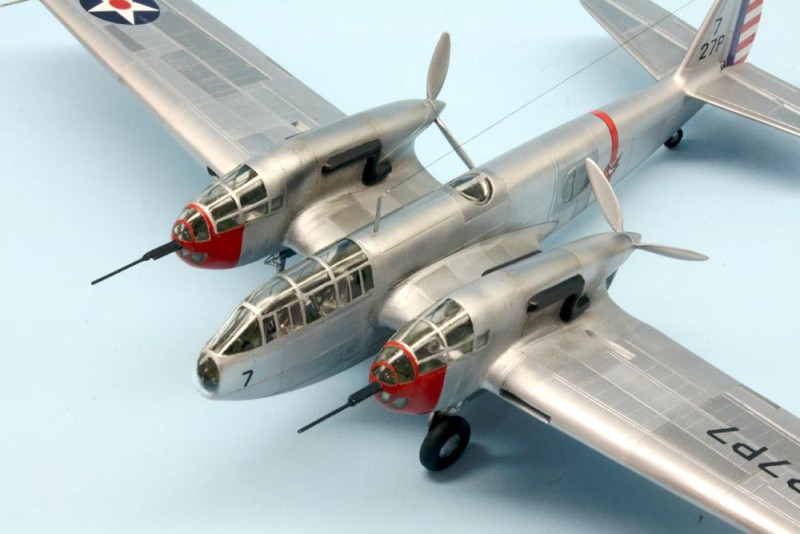
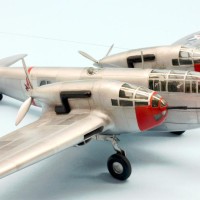

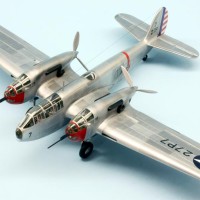
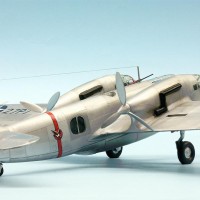


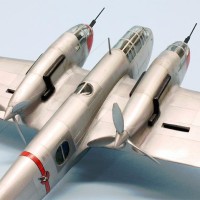
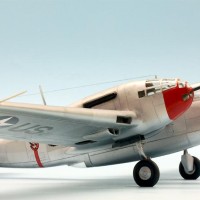
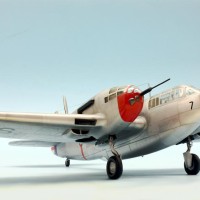
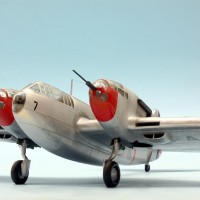
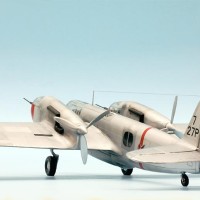

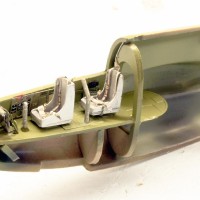
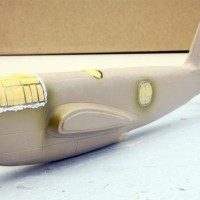


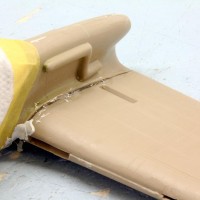

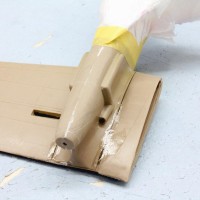
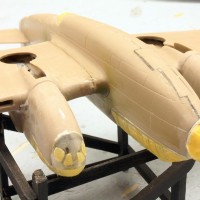
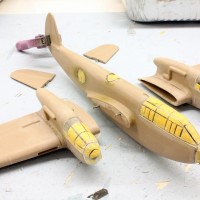
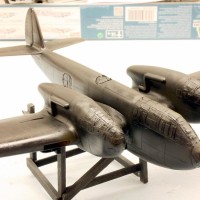
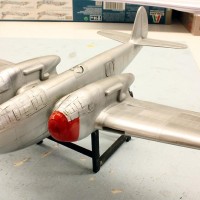
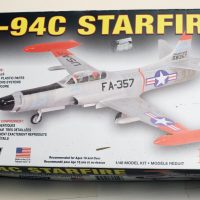

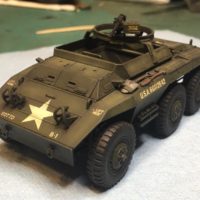
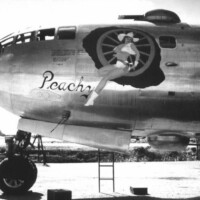
Beautiful build, for a Valom kit the final looks came out amazing! You conquered all the fit issues and finished it with a metal look. Repeat, "amazing!"
Thank you for your words and appreciation!
A truly excellent result out of a very difficult kit, Roland! That Airacuda is an aesthetically extremely pleasant design and the fact that those great aesthetics are intact/evident at the completed model of the extremely challenging Valom kit, speaks for itself, regarding your exceptional modeling skills.
It was also a pleasure to read the history of the plane: really intetesting! Makes one wonder why Bell went all the way towards innovation, leaving narrow "fail safe" margins...
Congratulations, my friend!
Never stopping to amaze us!
Thank you, my friend, for your words about the model and the text! Yes, interesting question; in any case, when it comes to naming, one has followed the "Aira..." theme: Airacomet, Airacobra, Airabonita...
Amazing story and a fine work for such an original aircraft (there should be a Imodeler section dedicated to "rare models"!)
Sad to hear that a Valom model has no proper fitting (one of my next projects comes from this manufacturer...I am shaking now...and besides, Valom models are quite expensive.
Thank you for your comment!
I really want to put this into perspective: I appreciate Valom kits very much and most of the time I remember very enjoyable building processes. For example, two Handley Page Harrows, a B-45 Tornado or recently the Vickers Wellesley come to mind. These were all wonderful kits that basically fit perfectly.In this respect, the meagre quality of this "Airacuda" was also a big surprise for me!
Great work Roland on this fascinating aircraft!
Thank you David!
I can only echo above comments, getting a Valim kit to look like it’s some Tamigawa product is itself a feat. This one’s a beauty Roland, a a good story also
Excellent work on this, Roland. A short run kit like that with a metal finish is a real challenge.
Ah yes, Valom. They are a mixed bag for sure. Their B-26 is another example-beautiful surface detail and little else. The guy that does the rivet detail and panel lines is a master, the guy that does the main shapes-not so much. I have this YFM kit and it will probably never get built, but you have done great work on yours to push it through. It is a neat looking unique airplane, congrats on an excellent job.
Looks great! I almost forgot about this aircraft, I remember seeing an article about it in an old Air Classic magazine. at that time the only kit done of it was a vacum form kit.
Very nice article and amazing model work. An Art-Deco blunder, interesting but too far ahead of its time Conceptually.
From the photos, it does look like it was an incredibly challenging build. You did a great job with it though and have produced a great looking and unusual model. I would agree Captain America would be right at home in a great looking aircraft like that.
What a great looking airplane, and your work captures the essence of this crazy interceptor. Nicely done!
Really an extrodenary plane and a wonderful build, Roland @rosachsenhofer
Challenging, especially at 1/72
The results are fantastic and making it look much bigger than this.
My compliments on this one.
Excellent build of such a dog of a kit. It's a fascinating aircraft, and you really brought this rare bird to life!
Fabulous work here Roland @rosachsenhofer. It sure looks like a real nightmare to build but you certainly pulled it off. I never heard of this plane so I followed the links you provided and did some extra research. I can't believe anyone Bell actually funded this plane and produced a few. Leave it to Bell to come up with another Air-a-wiffer contraption back then. Your model is absolutely outstanding.
Your results on this rare plane are great, Roland (@rosachsenhofer). Valom kits are very up and down, some are pretty good and some not so much. I still have several Valoms in the stash that I will do when I run out of almost all my other kits to build.
Amazing, @rosachsenhofer - amazing that you finished it, amazing that it looks as good as it does (which is "really really nice"). Truly, you are a glutton for punishment. I personally have concluded that there is no airplane model I want in my collection enough to ever attempt another Valom kit. Ever again.
So, major kudos indeed for this truly excellent result from one of the worst kits I have ever looked at.
Oh, and Erik Shilling told me that flying the FM-1 was "the single worst flying experience of my entire career. That was the worst airplane ever made!"
Tom, your comments not only always please me, they are also highly impressive in the way that they reveal who you all know! Your range is immense and I can only imagine how contact with these personalities must shape you!
Wonderful workmanship in achieving your remarkable build of a very cool-looking a/c. We are fortunate to have had you complete it and to share it with us. Special.
I would like to thank you all for your motivating, profound and entertaining feedback. I am indeed very honoured, thank you!